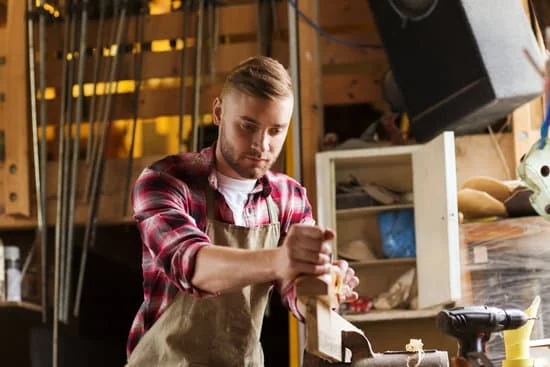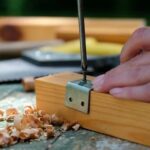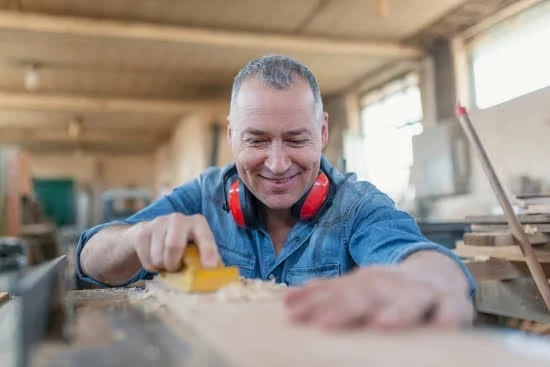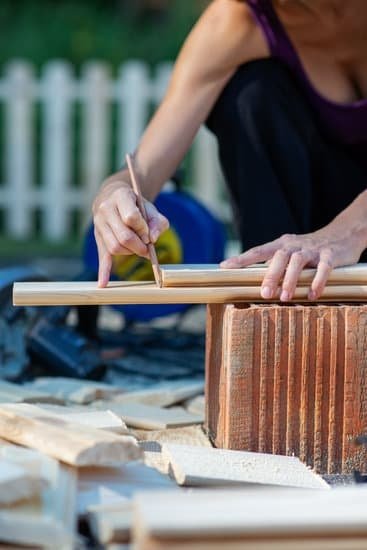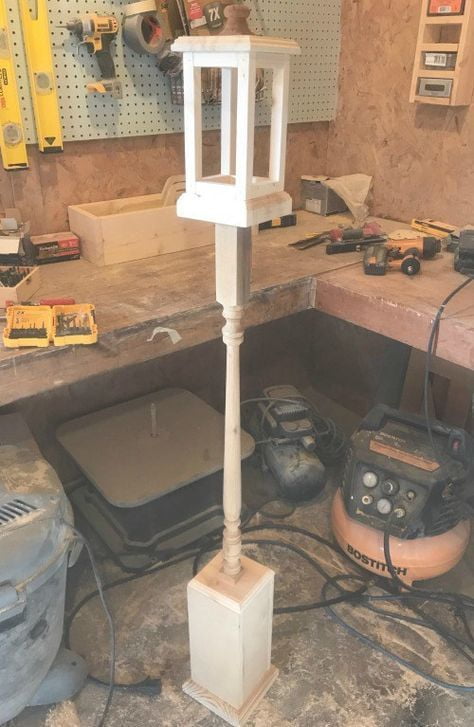Curio cabinets are a timeless piece of furniture that adds elegance and charm to any home decor. Whether you’re a seasoned woodworker or just starting out, creating your own curio cabinet can be a rewarding project. If you’re looking for inspiration and guidance, curio cabinet woodworking plans can help you bring your vision to life.
Curio cabinets have been treasured for generations, providing a beautiful way to display collectibles, china, trophies, and other cherished items. With their glass panels and intricate designs, these cabinets create a focal point in any room while also protecting and showcasing your valuables. Building your own curio cabinet allows you to customize the size, style, and finish to perfectly complement your space.
When embarking on a curio cabinet woodworking project, one of the first steps is selecting the right type of wood. The choice of wood will dictate the overall look and durability of your cabinet.
From oak to cherry to mahogany, each type of wood has its unique characteristics that can enhance the beauty of your finished piece. As you begin gathering materials and planning your project, consider how different woods will suit your design aesthetic and skill level as a woodworker.
Choosing the Right Wood for Your Curio Cabinet Project
Building a curio cabinet is a rewarding woodworking project that allows you to showcase your collectibles in a beautiful and customized display piece. One of the first steps in creating a stunning curio cabinet is selecting the right type of wood for the project.
The choice of wood will not only impact the overall look of the cabinet but also its durability and longevity. When choosing wood for your curio cabinet, it’s essential to consider factors such as color, grain pattern, cost, and workability.
Types of Wood for Curio Cabinets
There are various types of wood that you can choose from for your curio cabinet project, each with its unique characteristics and beauty. Common options include oak, cherry, maple, pine, mahogany, and walnut. Oak is known for its durability and grain pattern, while cherry offers a rich color that deepens over time.
Maple is a hard and stable wood that takes stains well, while pine provides a more rustic look. Mahogany and walnut are prized for their richness and depth of color.
Considerations When Choosing Wood
When selecting the wood for your curio cabinet, it’s important to consider both the aesthetic appeal and practicality of the material. Think about how the wood will complement your existing decor and enhance the display of your collectibles.
Additionally, factor in the cost of the wood as well as its workability – some woods may be easier to work with than others, especially for beginners. Ultimately, choosing high-quality wood that meets your design preferences and budget will ensure a successful curio cabinet woodworking project.
Tools Needed for Building a Curio Cabinet
Building a curio cabinet can be a rewarding woodworking project that showcases your craftsmanship and creativity. To successfully complete this project, you will need to have the right tools on hand. Here is a list of essential tools needed for building a curio cabinet:
- Measuring tape and ruler: Accurate measurements are crucial for ensuring all the components of your curio cabinet fit together properly.
- Circular saw or table saw: These tools are essential for cutting wood to the desired dimensions for the frame and shelves of the curio cabinet.
- Power drill with drill bits: A power drill will be necessary for drilling pilot holes, assembling the frame, and installing hardware.
- Clamps: Clamps are useful for holding pieces of wood together while glue dries or when securing joints during assembly.
- Jigsaw or router: These tools can be used to create decorative edges or cutouts in the wood for added design elements in your curio cabinet.
In addition to these basic tools, you may also need sandpaper, wood glue, wood screws, hinges, and knobs to complete your curio cabinet project. It’s important to have all the necessary tools before starting to ensure a smooth construction process.
When planning your curio cabinet woodworking project, it’s essential to familiarize yourself with how each tool works and practice safe woodworking techniques. By having the right tools and skills at your disposal, you can create a stunning curio cabinet to display your prized collectibles.
Step-by-Step Guide to Building the Frame of the Curio Cabinet
Building the frame of a curio cabinet is a crucial step in the woodworking process that sets the foundation for the rest of the project. Before beginning, make sure to have your curio cabinet woodworking plans ready, including detailed measurements and dimensions. These plans will serve as your guide throughout the construction process, ensuring accuracy and precision in every step.
When selecting the wood for your curio cabinet frame, it is essential to consider both aesthetics and durability. Hardwoods such as oak, cherry, or maple are popular choices due to their strength and attractive grains. Ensure that the wood is properly dried and seasoned to prevent warping or cracking over time. Remember to also factor in any additional materials needed for reinforcement, such as screws, dowels, or brackets.
To start building the frame of your curio cabinet, begin by cutting the wood according to your woodworking plans. Use a table saw or miter saw to make precise cuts for each component of the frame, including the sides, top, bottom, back panel, and shelves.
Assemble the pieces together using wood glue and clamps to create a sturdy structure. Be sure to double-check all measurements and angles before securing the joints to prevent any misalignments or inconsistencies in the final product.
| Wood | Advantages |
|---|---|
| Oak | Strength and attractive grain patterns |
| Cherry | Rich coloration and durability |
| Maple | Hardness and resistance to wear |
By following these steps carefully and precisely, you can ensure that your curio cabinet frame is strong, stable, and ready for further customization. With a solid foundation in place, you can move on to adding glass panels, shelves, lighting fixtures, and other decorative elements that will showcase your collectibles beautifully once the project is complete.
Adding Glass Panels to Showcase Your Collectibles
Measure and Cut the Glass Panels
Once you have successfully built the frame of your curio cabinet, it is time to add the glass panels. Measure the dimensions of each opening in the frame accurately to ensure a perfect fit for the glass panels. Use a glass cutter to cut the glass according to your measurements. It is essential to wear protective gloves and goggles when handling glass to prevent any injuries.
Mounting the Glass Panels
Carefully place each cut piece of glass into its designated slot in the frame. Ensure that the edges are aligned properly, and there is no risk of breakage due to misalignment. You may choose to use clear adhesive silicone or clips specifically designed for holding glass in place within a frame. Secure each panel firmly before proceeding with the next step in assembling your curio cabinet.
Enhancing Visibility With Tempered Glass
For added safety and durability, consider using tempered glass for your curio cabinet panels. Tempered glass is stronger than regular glass, making it less prone to breakage and shattering. It also offers increased clarity and visibility for showcasing your collectibles while providing an additional layer of protection. Investing in tempered glass will not only elevate the look of your curio cabinet but also provide peace of mind knowing that your treasured items are securely displayed with minimal risk of damage.
Tips for Staining or Painting Your Curio Cabinet
When it comes to staining or painting your curio cabinet, it’s essential to consider the overall aesthetic you want to achieve. Staining is a great option if you want to enhance the natural beauty of the wood grain, while painting allows for more creativity and customization. Before starting this step of the woodworking project, make sure to prepare your workspace by covering surrounding areas to avoid any accidental spills or splatters.
If you choose to stain your curio cabinet, start by sanding the surface with fine-grit sandpaper to create a smooth finish. Apply wood conditioner before staining to ensure even color penetration and minimize blotchiness. Once the conditioner has dried, use a clean cloth or brush to apply the stain in long, even strokes following the direction of the wood grain. Allow the stain to dry completely before applying additional coats for a deeper hue.
On the other hand, if you opt for painting your curio cabinet, select a high-quality paint suitable for wood surfaces. Before painting, make sure to prime the cabinet with a quality wood primer to ensure better adhesion and durability of the paint.
Use smooth brush strokes or a paint sprayer for an even finish, and allow each coat of paint to dry completely before applying additional layers. Whether staining or painting, always finish with a protective topcoat to seal and protect your curio cabinet from everyday wear and tear.
| Staining | Painting |
|---|---|
| Enhances natural wood grain | Allows for creativity and customization |
| Requires sanding and conditioning | Needs priming before applying paint |
| Apply in long, even strokes along grain | Use smooth brush strokes or paint sprayer |
Installing Shelves and Lighting for Maximum Display Effect
When it comes to showcasing your collectibles in a curio cabinet, the way you arrange and illuminate them can make all the difference in how they are displayed. Installing shelves and lighting are key components to maximizing the visual impact of your curated items. Here are some tips on how to effectively set up your curio cabinet for a stunning display:
- Shelves: Before installing shelves, consider the height and spacing needed for your specific items. Adjustable shelves can be a great option to accommodate various-sized collectibles. Make sure the shelves are securely attached to the sides of the cabinet to prevent any accidents or breakages.
- Lighting: Proper lighting can really highlight your treasures in the curio cabinet. LED strip lights or puck lights are popular choices as they provide even illumination without generating too much heat. Position the lights at different levels within the cabinet to avoid any harsh shadows.
In addition to organizing your collectibles and lighting them properly, it’s important to consider the overall aesthetic appeal of your curio cabinet. Choose a finish that complements your home decor, whether it’s staining the wood for a natural look or painting it for a pop of color. This final touch will enhance the beauty of both the cabinet itself and its contents.
Remember, safety should always be a top priority when setting up shelves and lighting in your curio cabinet. Securely fasten any fixtures and cords to prevent accidents, especially if you have small children or pets at home. By taking these precautions and giving attention to detail, you can create a visually stunning display that will surely impress anyone who sees it.
Whether you’re displaying family heirlooms, travel souvenirs, or prized collections, proper shelving and lighting can truly elevate the presentation of your treasured items in a curio cabinet. Follow these tips while customizing your own piece using curio cabinet woodworking plans, and soon you’ll have a one-of-a-kind showcase that reflects both your woodworking skills and personal style.
Safety Precautions and Finishing Touches for a Professional Look
When it comes to woodworking projects like building a curio cabinet, safety should always be a top priority. Before starting your project, make sure you have the proper safety gear such as goggles, gloves, and a dust mask. You should also ensure that your work area is well-ventilated to minimize exposure to harmful fumes from paints or stains. Additionally, always carefully read and follow the manufacturer’s instructions for any tools or materials you will be using.
In terms of finishing touches, there are many options to consider to give your curio cabinet a professional look. One popular choice is to add decorative trim or molding to the edges of the cabinet to enhance its aesthetic appeal.
You can also customize the hardware such as handles or knobs to match the overall style of your cabinet. Another finishing touch is to apply a clear coat of varnish or lacquer to protect the wood and enhance its natural beauty.
Overall, paying attention to safety precautions and taking the time to add these finishing touches will not only ensure that your curio cabinet looks professional but also lasts for years to come. With careful planning and attention to detail, you can create a stunning piece of furniture that will showcase your collectibles beautifully while adding a touch of elegance to any room in your home.
Conclusion
With the right set of curio cabinet woodworking plans, creating a beautiful piece of furniture to showcase your treasures can be a rewarding project. Curio cabinets have stood the test of time as a classic and elegant way to display collectibles, heirlooms, and other items that hold sentimental value.
By following the step-by-step guide provided in this article, you can build a custom curio cabinet that not only highlights your craftsmanship but also complements the decor of your home.
Once you have chosen the perfect wood for your curio cabinet and gathered all the necessary tools, you can start building the frame using precision cuts and measurements. Adding glass panels will not only protect your collectibles but also enhance their visibility. Whether you choose to stain or paint your curio cabinet, selecting the right finish will bring out the natural beauty of the wood and create a polished look.
Installing shelves and lighting in your curio cabinet will maximize its display effect, allowing your treasures to shine. Remember to take safety precautions throughout the construction process and add finishing touches for a professional appearance. In conclusion, displaying your hard work by showcasing your treasures in a beautifully crafted curio cabinet will not only add a touch of elegance to your home but also serve as a conversation piece for guests admiring your collection.
Frequently Asked Questions
Do People Use Curio Cabinets Anymore?
Curio cabinets are still utilized by many people today, albeit perhaps not as commonly as in the past. They serve a dual purpose of displaying cherished items while also protecting them from dust and damage. Whether it’s for showcasing collectibles, fine china, or family heirlooms, curio cabinets continue to be appreciated for their functionality and aesthetic appeal.
Are Curio Cabinets a Thing of the Past?
While curio cabinets may not be as prevalent in modern homes as they once were, they have not become entirely obsolete. The nostalgia and charm associated with these pieces of furniture often lead people to incorporate them into their interior decor.
Their ability to add character and personality to a room ensures that curio cabinets remain relevant even in contemporary settings.
What Is the Difference Between a Curio Cabinet and a Display Case?
The main difference between a curio cabinet and a display case lies in their design and intended use. Curio cabinets typically feature glass panels on multiple sides, allowing for a full view of the items displayed inside. They often include built-in lighting to showcase objects more effectively.
On the other hand, display cases can vary in terms of materials and construction but are generally more functional for retail environments or museums where security and accessibility are key concerns. Essentially, while both serve the purpose of displaying items, curio cabinets lean more towards decorative appeal in residential settings compared to the practicality of display cases in commercial spaces.

Hi everyone! I’m a woodworker and blogger, and this is my woodworking blog. In my blog, I share tips and tricks for woodworkers of all skill levels, as well as project ideas that you can try yourself.

